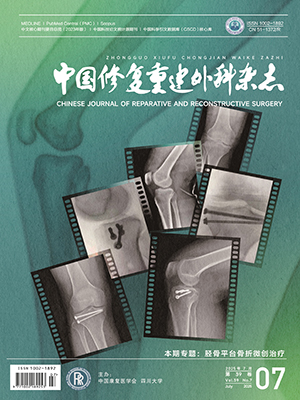Objective To investigate the clinical efficiency of thedistally based sural island flap and myofasciocutaneous flap in reconstruction of defect and osteomyelitic cavity of the ankle and foot. Methods From June 1997 to October 2004, 21 patients with soft tissue defects and osteomyelitis in the ankle and foot were treated with the distally based sural island flap and myofasciocutaneous flap. There were 20 males and 1 female aging from 6 to 78 years. The defect was caused by soft tissue defect trauma(18 cases) and electrical injury ( 3 cases). Among 21 patients, 17 were treated with island flaps, 4 by the myofasciocutaneous flap. The size of flaps ranged from 4 cm×5cm to 16 cm×22 cm. The donorsites were closed directly in 4 cases. Results The flaps completely survived in 21 cases and healing by first intention was achieved. After a follow-up of 36 months, no complication occurred. The color and texture of the flaps were good. The appearance and the function were satisfactory. Conclusion Distally basedsural flap is a reliable flap. This flap has rich blood supply without sacrifice of major arteries. Flap elevation is easy. It is very useful in repairing large soft tissue defects of the lower leg, the ankle and the foot, especially inrepairing deep soft tissue defects and osteomyelitic cavities .
Citation: SHEN Yuming,XIANG Dong,WANG Naizuo,et al.. CLINICAL APPLICATION OF THE DISTALLY BASED SURAL ISLAND FLAP AND MYOFASCIOCUTANEOUS FLAP. Chinese Journal of Reparative and Reconstructive Surgery, 2006, 20(3): 256-258. doi: Copy
Copyright © the editorial department of Chinese Journal of Reparative and Reconstructive Surgery of West China Medical Publisher. All rights reserved




